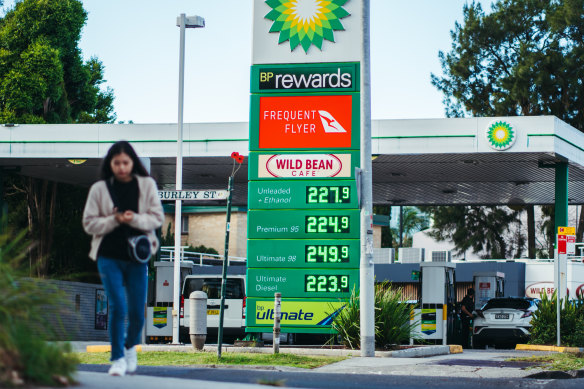This was published 1 year ago
Opinion
Persistent pessimism: Why Australians are depressed about the economy
Elizabeth Knight
Business columnistNeither the rising property market nor the spectre of the end of interest rate rises has been enough to drag consumers out of the quagmire of persistent pessimism.
It has been 30 years since Australians have felt this sustained period of weak consumer sentiment. The last time was during the 1990s recession.

The response from consumers to their straightened circumstances has been to reduce spending and investment risk.Credit: Oscar Colman
It seems residents of the lucky country aren’t feeling particularly lucky after a year of record inflation that has created a cost-of-living crisis.
The two major surveys measuring how we view our own finances and the broader economy have only gotten worse overall.
Cost-of-living pressures are hanging over people’s heads, stopping them from being happy about the increasing likelihood that the next move in interest rates will be down.
While economists increasingly take a view that Australia will avoid a recession, down in the real economy consumers are being buffeted by pressure on their own balance sheets, ranging from higher petrol prices, increased rents, four percentage points of rate rises in 16 months and surges in electricity prices.

Petrol prices are one of many things currently weighing heavily on household budgets.Credit: Dion Georgeopolous
Not even rising house values was enough to rescue sentiment from the doldrums, although the confidence measure for those with mortgages was improved. But the cohort that own their own homes and those who rent didn’t receive any fillip from the positive outlook on interest rates, according to the Westpac-Melbourne Institute Consumer Sentiment. Among lower income earners and renters sentiment is particularly dire.
It is a salient reminder that only a third of householders have a mortgage.
The “family finances versus a year ago” sub-index fell 4.4 per cent, more than reversing a modest gain in August to hit a new 31- year low of 61.5. The fall came despite an improvement among those in the mortgage belt which was more than offset by big declines among renters, 18-to-34-year-olds and low-income earners, according to the Westpac-Melbourne Institute survey.
The ANZ-Morgan sentiment index quantifies a similar picture. It has been below the long-term average since 2021 and in deeply negative territory of below 80 points for six months in a row – the longest stint on record.
The response from consumers to their straightened circumstances has been to reduce spending and investment risk – with respondents preferring to pay down mortgages or squirrel money into deposits rather than buying property or investing in the stock market.
Typically, rising house prices lead to the homeowners feeling wealthier and more inclined to spend.
But the jury is still out on whether the firming property market will be sustained. There is a school of economists that fears values might fall as owners who cannot service increased interest rates will need to sell, creating fresh supply.
And the higher interest rates also mean that people cannot borrow as much as they previously could. This view is supported by anaemic economic growth and forecasts that unemployment will eventually rise, albeit from the very tight labour market we are currently experiencing.
The contrary view is that the housing supply shortage created by increased immigration and a lack of new housing will support house price gains.
Australian Bureau of Statistics data on the number of dwellings approved to be built in July showed a month-on-month decline of 8.1 per cent from June, and a year-on-year decline of 10.6 per cent from July 2022.
While the government has finally got the green light to address the acute housing shortage with the creation of the Housing Australia Future Fund, it will take time to address the current demands for (particularly) affordable housing.
For the one-third that rents and whose finances have gone from bad to desperate, consumer “confidence” feels like a misnomer. It should be measured by fear and apprehension.
The Business Briefing newsletter delivers major stories, exclusive coverage and expert opinion. Sign up to get it every weekday morning.